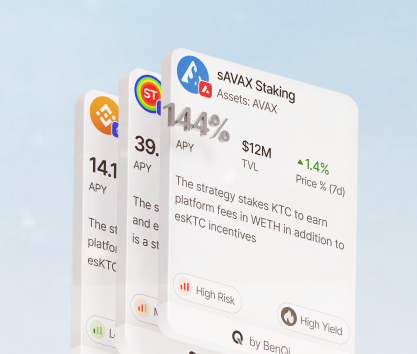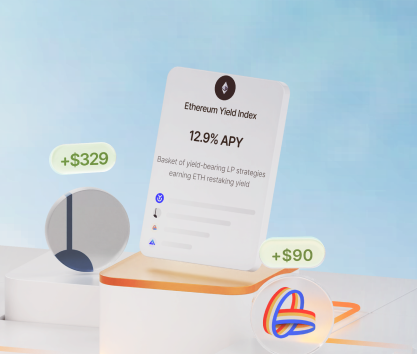As one of the pioneers in the field of yield farming, Compound has been deservedly enjoying popularity among crypto enthusiasts to this day, 6 years after its initial launch in September 2018. It offers a rich selection of investment tools for all investors interested in building a consistent stream of passive income.
Despite being among the earliest “birds” in the decentralized finance sector, this platform is still leading the pack of protocols focused on lending and liquidity provision. At the time of writing, it has over $1.197 billion in TVL and the native token is close to a sizeable $331 million market cap. With over $600 million borrowed and $1.6 billion used as collateral across 8 different blockchains, this protocol is surely a behemoth demanding attention.
Decentralization of financial instruments makes the whole cryptocurrency ecosystem democratic and provides environments and tools that bring balance naturally by automatically enforcing rules that make interactions between users fair. In 2016, when the development of this platform entered its earliest cycles, the maturing DeFi ecosystem needed ways to increase cash flows and ensure that investors have access to financing.
The open-source manner of the development process makes everything transparent and easy to verify. All the necessary resources for those who would like to join the community are available in the Comet repository. The documentation in general is thorough.
Compound is a decentralized system where users can lock up their assets as collateral to receive tokens based on BorrowCollateralFactor (a rate determined by the system for all types of assets that can be offered by credit takers). For example, USDC/ETH on Scroll has a BCF of 80% for ETH and 75% for Lido wstETH meaning that you can borrow up to 80% and 75% in USDC against these assets respectively.
Compound is compatible with multiple blockchains including Ethereum (where it was initially deployed), Arbitrum, Base, Polygon, and Optimism. The platform owes its rapid growth in popularity to excellent technical documentation and the ease of development for this protocol. The quick adoption by a large cohort of Dapps means that adapting existing elements of digital architectures to the requirements of this platform is convenient and seamless for many developers.
Benefits of using Compound for lending and borrowing
As one of the most reliable and long-standing DeFi protocols, this platform offers a timeless product that many retail investors find quite appealing. Many crypto enthusiasts like the idea of having a credit line that can be automatically extended if you have sufficient collateral. Borrowed funds can be used for personal purposes, active trading, or investment strategies like yield farming.
The compound protocol in particular is advantageous for several reasons:
- Streamlined user experience. Even direct interaction with the protocol is quite simple. You need to use Compound Comet (V3) and apply functions Supply, to offer funds as collateral, and Withdraw to get back your assets. There are system-wide limitations like no provision of assets over the SupplyCap. These limits ensure that risks are low for all stakers and that transactions occur smoothly.
- A clearly defined product. One of the main entry barriers in the crypto industry is the complexity of some investment strategies that often involve multiple rounds of supplying, borrowing, reinvesting, and other forms of transactions. Many steps are hard to follow for newcomers. Compound has a straightforward service that can be effortlessly used by people without any technical know-how.
- You don’t need a large capital to start. The protocol does not have minimum thresholds for lenders and borrowers. Investors must consider gas fees that can be substantial and other costs associated with any operations with the Comet protocol. Otherwise, you can start with a very small capital and grow your portfolio over time.
Understanding the Compound governance token (COMP)
One of the main attractions of this platform is the automatic distribution of $COMP tokens among all users of the ecosystem. At the time of writing, it has a close to $320 million market cap and roughly $52 million trading volume. These numbers have suffered from the inevitable inflation yet the value of the asset is still relatively high due to its utility.
You can accrue these tokens by lending and borrowing on Compound. Active users receive rewards and enjoy APYs depending on the type of operation and base assets. For example, supplying USDC on Ethereum yields 0.46% APY while borrowing 0.31% APY. Each day, 1665 $COMP tokens are distributed across multiple blockchains.
The main focus of the platform is on providing an excellent environment for investors to thrive while ensuring that the future is bright for the protocol. The developers hope to achieve this by facilitating community engagement through active governance that can decide the fate of this DeFi platform. Compound governance token (COMP) has one main purpose: to be used for voting by holders.
This particular form of utility may not seem attractive to individual crypto enthusiasts chasing profits, but development teams, long-term investors, and other power users value these tokens quite a lot. They allow all holders to proactively debate, propose, and vote on a variety of issues to ensure that the development process and the general evolution of the protocol are steered toward a better future for all users.
Earning interest with Compound
Suppliers of tokens that go into pools from which borrowers can extract loans are rewarded with $COMP tokens according to the distribution scheme. It is not the only way to make money with this protocol. When you supply a supported token, you start earning interest immediately. Payouts are denominated in the same asset. For example, supplying DAI will yield you DAI.
Interest rates are dynamic and may change due to the conditions in the lending/borrowing market and the utilization of assets. These parameters can be easily found in the dashboard of the Dapp or by using the Comet protocol directly with functions like Get Supply Rate or Get Borrow Rate.
Tracking the utilization and available supplies is hugely important if you plan to make money with this protocol. Calculating potential returns is a challenging task since rates fluctuate and the price of assets is also not set in stone. The Compound interest in DeFi is among the lowest as APYs rarely exceed 6%. The consistency, trustworthiness, and accessibility of the platform make it popular among conservative investors interested in preserving their assets in the long run.
USDC/Ethereum pool is one of the most popular with over $456 million earned and roughly 4.1% APR for suppliers. Collateral assets include wrapped Bitcoin, Ethereum, and $COMP. Similar compositions can be found in other pools.
In many aspects, this platform is not different from many similar protocols. It is one of the foundational projects in the industry. It created many staple features that are now widely used by its peers and competitors. To stand out from the crowd, Compounds offers a variety of interesting instruments to developers and users alike.
Here are elements of the platform’s functionality that may interest you:
- Controlled liquidation. Compound focuses on creating clear and simple rules for all ecosystem participants. By implementing strict rules for borrow and liquidation collateral factors, it builds an environment where everyone is on the same page. What we want to say is that you won’t be surprised if something goes south.
- Multi-chain lending. Compound is an EVM-compatible application that can also interact with a cohort of other blockchains like Optimism, Arbitrum, Scroll, Base, and Polygon. Users can effortlessly supply and borrow all sorts of assets issued by various protocols on these networks.
- Transparent on-chain data. The dashboard is designed to show all parameters of pools, potential APR/APY, all-time earnings, available funds, and more. The ability to exactly estimate gains from supplying tokens or know in advance the real cost of credit is incredibly valuable for proactive investors.
- Streamlined migration. Compound is on its third iteration. The process of moving stablecoin holdings from Compound or Aave V2 is simple and fast. The Position Migrator is an excellent tool that expedites the transferring process and ensures that all investors enjoy a seamless transition from one version of the protocol to another.
- Instant collateral swap. You can quickly swap positions within the protocol while avoiding lengthy unbounding processes. This feature is useful to active retail traders switching market positions often and investors who want to quickly extract specific tokens for utility or governance purposes without compromising their stakes.
- DeFi Saver is a great tool that helps you protect holdings from liquidation risk by rebalancing collateral when necessary. This extension for the Compound Dapp is a great instrument for those seeking ways to further increase the safety of their investments in this Dapp.
The versatile functionality of the protocol makes it a good choice for people invested in the crypto industry in general. Compound has been around for a while now and the support from third-party developers and enthusiasts seems to be very strong. Multiple community-tested extensions simplify the investor’s life by providing risk management and utility tools.
The current iteration of the protocol showcases stronger security, faster operations, easier function implementation, and a ton of useful QoL improvements. Below are several important infrastructural and architectural features of the protocol that set it aside from competitors:
- A strong focus on development. Compound is an ecosystem where third-party devs can deploy compatible products and easily connect them to the protocol using the Comet repository. While other projects implement similar functionality, the age of this protocol makes it one of the best in terms of app support.
- Centralized ownership. Despite being positioned as fully decentralized, there is a corporate entity behind the initial deployment of the Dapp. The team is still filled with people having extensive corporate backgrounds. If you are all about true decentralization and democratization of finance, this fact may rub you the wrong way.
- Proactive governance. Despite having some elements of centralization, the community is truly in charge of the overall development process. Using $COMP only for voting and as collateral may sound a little bit limited by today’s standards, but it is a great way to participate in the ongoing evolution of the protocol if you are a genuine supporter.
The future of Compound Finance
As of the time of writing, many financial metrics seem weak compared to the roaring period before 2022. The protocol has seen a significant change in the composition of its TVL. Ethereum holdings are much higher than USDC ones. Whether this rebalancing will affect the platform is a big question. Some experts believe that TVL fluctuations may harm investors in the long run.
It seems to be true if you look at the correlation between TVL and median APYs. While APYs rose to 16.2% with the TVL hitting its ATH at $1.897 billion in April, the divergence became apparent by the end of July 2024 when median APYs dropped to 4.1% despite TVL hovering above the $1.2 billion level.
The technology has been updated quite well and the rollout of Compound III was a success. However, the ecosystem still feels rigid with many other decentralized finance protocols seemingly catching up. As in the case with many other platforms in the crypto industry, you should do your own research and try to lower your expectations in regards to the future of protocols like Compound.









